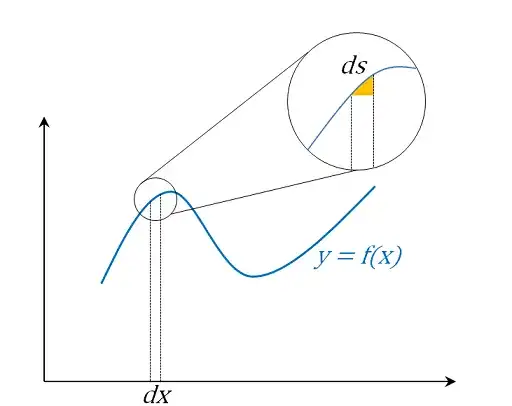Background
We know that the integral $\int f(x)~dx$ represents the area under the curve, where the area is represented by the sum of individual areas of elemental strips of the width $dx$ and height $f(x)$. As $dx$ is infinitesimal, we can ignore the error due to the curvature of the curve, and treat the elemental strips as almost 1-dimensional. As the curvature disappears at infinitesimal scale, the area becomes that of a perfect rectangle, $dx \times f(x)$.
Similarly, this can be extended to working out the volume of revolution, which consists of elemental "disks" of the face area $\pi f^2(x)$ and length $dx$. The name "disk" used in textbooks is really a cylinder with a large face area relative to a small (really, infinitesimal) length. The volume of a cyliner is equal to a face area $\times$ length, so the volume of revolution is $\int \pi f^2(x)~dx$. Again, this ignores the curvature of the original curve $f(x)$ and assumes that at each $dx$ the elemental unit is perfectly cylindrical.
The above are uncontroversial established textbook results.
Question
Why can't we extend the same principles in deriving the surface of revolution? If we take the cylinder as the elemental shape, the surface of revolution of the whole curve could be represented by the sum of lateral surfaces of the elemental cylinders, each equal to $2\pi f(x)\times dx$. So the whole surface would be equal to $\int 2\pi f(x)~dx$. But apparently this is wrong.
Instead, here, the textbook derivations (example) do take account of the curvature in $f(x)$, and use the elemental surface area equal to $2\pi f(x) \times ds$, where $ds$ is the curved length of the curve in each interval of $dx$. Hence, the elemental shape assumed is that of a tube, instead of a cylinder.
Why is it not acceptable to ignore the curvature here, but is acceptable in the calculations of area under the curve and volume of revolution?
